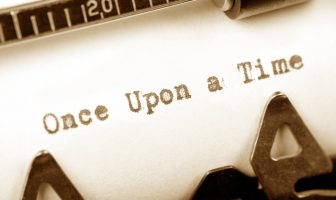FInding good stories
How do you find good stories?
Jack Canfield and Mark Victor Hansen have made a fortune with their “Chicken Soup for the Soul” series of books, not for writing the stories but for collecting them.
Good stories are happening all around us all the time. They are in the news, they are in your own life. So, how do you spot a good story? (By “good” I mean useful, worth telling, illustrative. Perhaps even “sticky”)
One useful way is to recognize that, according to Chip and Dan Heath, authors of the book, “Made to Stick,” there are really only three types of stories in all of history. Plot lines you might say.
Unless they’re wrong. Aristotle thought there were four. He delineated four primary dramatic plots: Simple Tragic, Simple Fortunate, Complex Tragic, and Complex Fortunate. (But common. Aristotle? He was SO, like, last year.)
The great Robert McKee, guru to many a hollywood screenwriter, lists 25 types of stories in his book “Story: Substance, Structure, Style and the Principles of Screenwriting” including “the modern epic, the disillusionment plot, and so on. If your goal is to be a screenwriter then listen to him, not me. I’m just not sure I’m going to be telling too many of my therapy clients a story based on the disillusionment plot.
The Heath brothers’ book, “Made to Stick,” is a fascinating read that is about how advertisers, politicians, and communicators of all stripes, get their ideas to stick in the minds of their listeners. This is an important feature if that advertiser wants to sell products or if that politician wants to get elected. One of the chief ways you can get ideas to stick is through the use of stories.
The Heath brothers have poured over hundreds of inspirational stories looking for commonalities and have boiled all them down to three types of stories. These are they:
1. “The Challenge Plot.” The authors site David and Goliath as the classic challenge plot, where the protagonist overcomes formidable odds and succeeds.
2. “The Connection Plot.” A story about people who bridge a gap – racial, class, religious or otherwise. Like the famous “Mean Joe Green” coke commercial.
3. “The Creativity Plot.” Like Newton when the apple fell on his head, the creativity plot involves someone making a mental breakthrough, solving a long standing puzzle or attacking a problem in an innovative way.
Knowing these three basic plot lines will not necessarily help you to create new stories of your own but to be able to spot them when they appear and then have them ready to go when the need arises.





 Download Doug O’Brien’s paper,
“Be your Best with Self Hypnosis”
Download Doug O’Brien’s paper,
“Be your Best with Self Hypnosis”